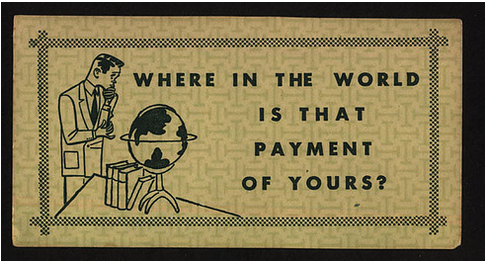As we get later into the year, I’ve heard this refrain from a number of start-ups: “We hit our revenue plan, but we’re behind on collections.”
Hmmm …
I get it, I’ve lived it. And it’s not OK, and let me help you make some changes — today.
 The “problem” is sales closes the contract, and then, as often as not, it’s not even clear who at the customer pays. Where does the P.O. go? Has it been sent? When will it be paid? What happens if it isn’t?
The “problem” is sales closes the contract, and then, as often as not, it’s not even clear who at the customer pays. Where does the P.O. go? Has it been sent? When will it be paid? What happens if it isn’t?
The “problem” is compounded if you pay your sales reps commission upon e-signing the contract, not upon collections.
I’m going to give you some tips that have worked for me, but before we get there, let me tell you my meta-learning:
Cash Collections Has to Have a KPI, Too. It Has To Be One Of Your Core Goals.
At least if cash matters.
Our goal, once I set it, was to collect in cash, each month, 110% of that month’s MRR. In other words, if we had $300k in MRR that month, finance’s job was to collect $330,000. At first, this may confuse you, a goal > 100% of MRR, but then you’ll see it makes sense. Because it ties to annual prepayments. Annual deals can take longer to collect — up to 60 days after the deal is signed — but once you get it, you’ll get a lot upfront. And once you get renewals rolling in in Year 2 and beyond, this pre-payment math compounds further.
I’m not sure if 110% is the right goal for you. If all your contracts are annual or longer, it probably should be higher, e.g. 120% of MRR. If many of your contracts are still monthly, hitting 100% may be the best you can do for now.
Whatever it is, like any goal you set on-the-fly … measure it. Then set a plan to at least improve it by 10-20%.
So Step 1 is measuring it and setting a clear, quantitative goal — with an owner, your controller — to improve it.
Step 2 is developing the processes to hit that goal.
Here’s what we did:
1. Pay commissions (and renewal bonuses) on cash receipt, at least for now. Later, when you are bigger and cash isn’t an issue, you can change your policy here if you want. But when cash is king, don’t get disaligned from your sales team. Even if you have to increase bonuses here. Pay cash when you get cash. Reps will hate it. But if you pay them above market, and fairly — they’ll get on board.
 2. For new customers, require upon contract execution identification of who will pay in purchasing. This may sound obvious but sales won’t do this otherwise.
2. For new customers, require upon contract execution identification of who will pay in purchasing. This may sound obvious but sales won’t do this otherwise.
3. For renewals, notify customers 60 days prior to renewal that they have 60 days to pay via a proper, corporate invoice.
Most small businesses will ignore this, but most larger companies will then get it over to finance/accounting, who will need > 30 days to pay. It will kick off the right processes in the later case. 30 days is not enough in the enterprise.
4. Remind renewal customers again 30 days prior to renewal they need to pay now to avoid a service interruption. This is when you really get the attention of the smaller businesses.
5. Alert them 7 days prior to renewal, if still haven’t paid, a service interruption is coming on Date X, both in email — and a phone call.
6. Provide a 7 day grace period after expiration, and allow an extension if they call and ask for one and promise the “check is in the mail” … AND ADD … a BIG RED BANNER ON THE WEBSITE you see every time you log in. That counts down until the service shuts down for nonpayment. So there are no surprises.
7. Shut it down after that and allow instant resumption upon payment, if you can. At the higher-end, if you can’t do a full shut-down … at least do not allow any feature changes, seat adds, etc. until payment received.
This process above resulted in a very high level of payment, especially on renewals. And in any event, hitting 110% of MRR in cash each month.
Whatever your processes, they’ll get a lot better once Collections Has a Clear Goal. That is, even better, a Core KPI for the whole company.

